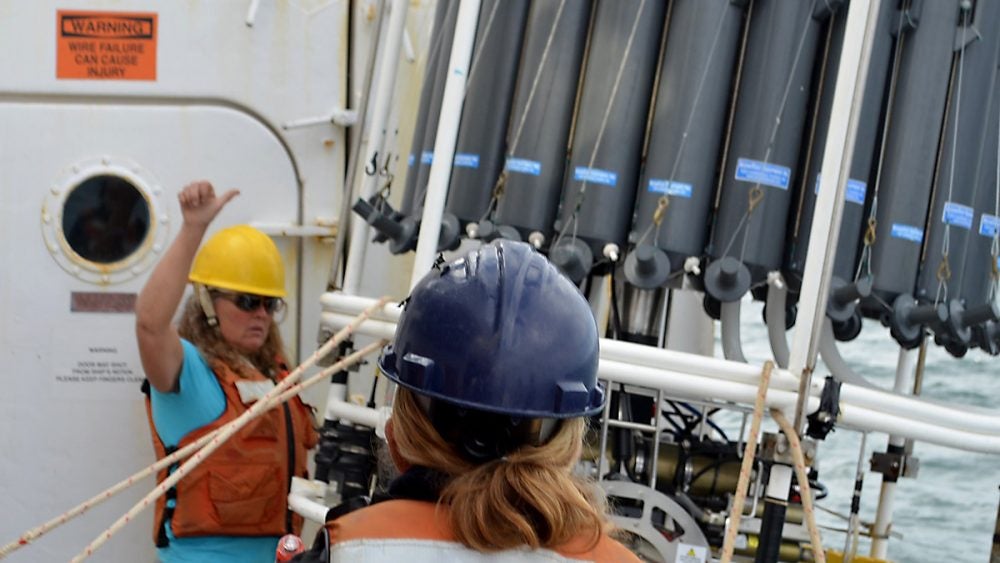When defining a new kind of ship to join the U.S. Academic Research Fleet, the Division of Ocean Sciences at the National Science Foundation polled the science community. What must a Regional Class Research Vessel (RCRV), operating during the middle of the 21st-century, be able to do? What oceanographic research operations will be the most significant and frequently performed?

In its design criteria, NSF specified that new RCRVs must, at a minimum, enable the following functions:
- Sample and collect data of surface, mid-water, and sea floor parameters using modern scientific laboratories and instrumentation, including portable laboratory vans
- Deploy and recover…
– scientific packages, both tethered and autonomous
– unmanned aerial systems (UASs) and weather balloons
– moorings and coring equipment
– small craft, including autonomous surface vehicles (ASVs)
– free-floating instruments - Perform acoustic, multibeam bottom mapping and sub-bottom profiling
- Handle, monitor, and service remotely operated vehicles (ROVs) and autonomous underwater vehicles (AUVs)
- Provide full-time, high-speed satellite connectivity for communications, internet access and data transfer, including telepresence between researchers at sea and colleagues, students and the general public on shore
- Navigate precisely for station-keeping and track-line maneuvering to support deep sea and coastal operations
- Operate for long periods on-station or underway at low speeds for towing and bathymetric surveys
- Provide access to the sea for scientific personnel with visual, hearing or mobility limitations.
The final design trades away reliance on larger, traditional fixed laboratories in favor of a mix of flexible fixed-laboratory space and a large, open aft deck that can accommodate more laboratory vans to suit the mission at hand.
